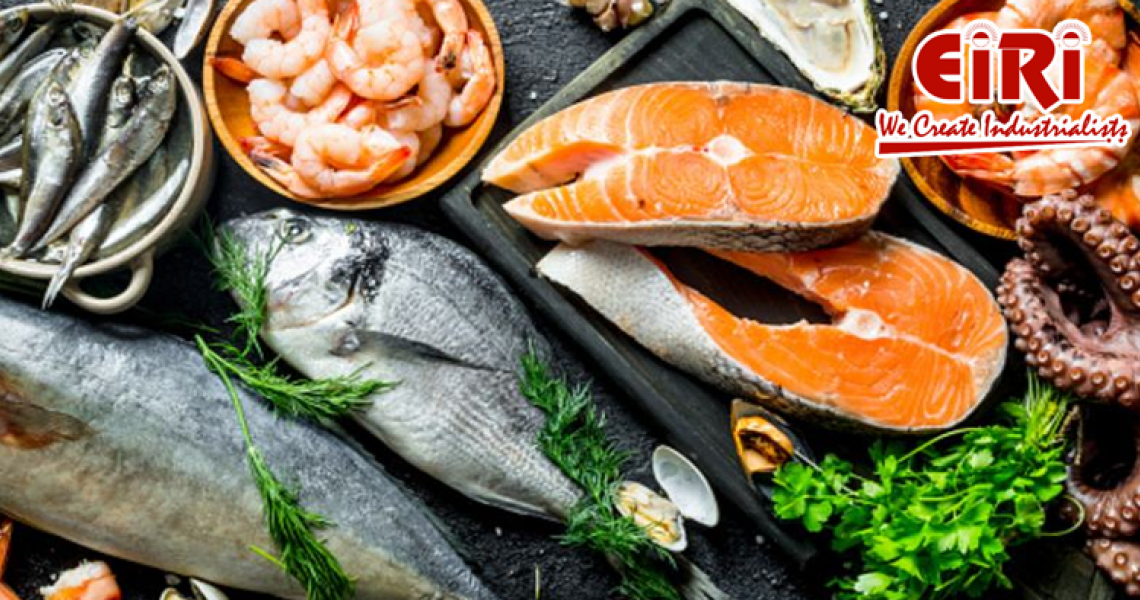Seafood Processing Industry Future Growth

Seafood processing involves various tasks such as harvesting, freezing, eviscerating, canning, and packaging. The seafood processing industry prepares it before delivering it to the consumers. It means bringing natural resources and adding value to the products.
Seafood processing market overview
The expectation for seafood processing market growth for the period 2022 to 2027 is at 3.7% CAGR. Seafood processing implies using the process with fish products from the time they are caught. The fish are caught from fish farms or by fishing fleets, and the processing is complete only when the product reaches the end user.
The seafood processing industry involves various aspects, such as freezing, heating, drying, smoking, and irradiating. Seafood processing enhances the product's shelf life. It means it limits decay and degradation. There is rapid growth in seafood products, and the increasing automation in the seafood processing industry assures good contribution. The seafood processing industry growth is promising in the future years.
The seafood processing industry shows a moderate rate of growth over recent years. It was due to the US fishing activity following the BP oil spill of 2010. There was an average growth in export demand and domestic need for seafood processing. However, things have changed, and the new technologies promote the seafood processing industry, assuring future growth.
Factors for future market growth
The government introduced rigid regulations for food and its related industries. Thus, it shifted the focus of the consumers. The market boosters of the seafood processing industry are the expanding population, disposable income increase, surging urbanization, and health awareness.
The preference acceleration was for tasty and healthy food for the global booming population. The need for increasing nutrition became high to benefit, and the scenario of the food processing industry took the lead. Advanced techniques compel seafood processing to enhance the production of seafood. The dramatic rise in Europe and North America in health awareness fosters the seafood processing industry's future growth. The Asia Pacific consumer base is not behind.
The global market views an opportunity to soar where there is will increase in non-vegetarian eaters choosing to eat a pescatarian diet. It means consuming vegetarian food and seafood without taking meat such as beef, pork, and others. This shift of consumers may be the emerging healthier diet trend. It will bolster the economic status and the disposable income surge. The trend emerges to work favoring the seafood processing industry growth to a great extent. The worldwide scene for optimistic trading will see a spike in the production of seafood processing manufacturing. Thus, the aquaculture industry will thrive in various countries, presenting the global market a substantial traction.
What are the drivers and restraints?
Fish and fish farming expansion are the market drivers. It is due to the awareness increase relating to public health. The main driver for the seafood processing industry's growth is consumer awareness. Consumers understand the benefits of eating seafood. They know fish is low in fat and is protein-rich. They are rich in phosphorus, calcium, iodine, zinc, iron, potassium, magnesium, vitamin D, omega-3 fatty acids, and vitamin B2.
A popular substitute emerges as protein-rich food offering a range of benefits. It helps in addressing excessive cholesterol issues and promoting good health. Recently, the aquaculture market has witnessed more investment as initiatives promote the seafood processing industry growth. The practice is to expand the economic potential and the industry.
In the past years, only the fish oil market enjoys expansion. It is to make fish oil using fish tissues featuring Omega 3 fatty acids. In chronic medical conditions, omega-3 fatty acids are a requirement for elderly individuals. It helps prevent certain diseases. Thus, the seafood processing industry driver is growing health awareness and the older consumer’s wellness.
A crucial factor inhibiting growth is the fishery's product intake due to water pollution. The market growth may face restraining even through the stringent laws of the environment safeguarding fish species and the raw material costs rising.
Growth scenarios and influences of seafood processing
Asia Pacific market in 2022 has a 44.6% dominant market share. It is showing an 8.5% CAGR in the projection period. The anticipation is to get quicker revenue growth. Market expansion will fuel the seafood demand, as per region, and the population will shift to seafood processing as per their living standards. Already, deep ocean fishing in India and China has been increasing the fish products supply for processing.
Europe has a 39.7% market share. It has innovative ships and machinery. In the future, the anticipation is it will expand its regions as the European nations heavily rely on fishing. The GDP will boost.
North America has a 34.5% market share. Canada and the US consume significant seafood items. Thus, the seafood processing industry's growth is going to be explosive.










